INTRODUCTION
A very high proportion of the metallic packaging consumed today, whatever its use – food, beverages, industry, aerosols, etc. – are provided with an internal and even external protective coating. The latter can be decorated to give a good image as well as protection. This protection is achieved by means of varnishes.
The use of coatings on metal packaging has a long history. From the beginning of the 20th century, coating manufacturers began to support the development of the packaging market, soon reaching the manufacture of interior varnishes based on oleoresinous resins; later came the phenolic ones, until 1935, when beer began to be canned, which led to the appearance of vinyl coatings. Then came epoxy-phenolics, organosols, acrylics… And the evolution of coatings continues to solve the challenges that the packaging industry presents in its desire to can a greater diversity of products (acidic foods, sulphurous, carbonated beverages, etc.), and to seek new designs and materials for packaging.
The developments that are achieved in this sector are polarized by the technology and research of companies from the United States, Germany and Great Britain, which over time are granting licenses in many different countries.
Within the metalworking industry, the use of varnishes and lacquers has always originated a special sub-sector of highly specialised knowledge, giving rise to an auxiliary industry dedicated to their application – together with lithography – on which many packaging manufacturers rely, especially those of small size. The reason for this is not only the knowledge necessary for its definition and use, but also the heavy investment required for its application, which is difficult to amortize in companies with a medium or low turnover.
The use of varnishes, as already mentioned, started early on in the metalworking industry as a response to the internal attack – due to the action of the product – and external – environmental agents – of the containers. For the packaging of very aggressive products such as pickles, pickles and especially beverages, it soon became clear that no matter how much tin protection the steel sheet of the tinplate had, it was only a matter of time before attacks and/or perforations occurred, but already long before the product had lost its qualities suitable for consumption.
Tin is an expensive metal and the efforts of the steel mills – tinplate manufacturers – focused on reducing its consumption, first with the use of electrolytic tinplate – which completely banished the “coke” – and then with the development of differential tinplate – different coating on each side -, low coating – LTS – and even in the replacement of tin by chromium – TFS – of lower cost. In all these cases, varnishes (or organic coatings) provide adequate protection to the product and the base metal of the container.
GENERAL CLASSIFICATION
Coatings are used both on the inside of the container – in contact with the product – and on the outside – in the presence of external agents. There are common varnishes for both uses but in general they usually differ – at least in the application conditions – as the demands to be covered are different, being more demanding those required for interior protection.
Coatings are commonly classified into:
– 1.- Protective interior coatings, they are in contact with the packaged product and are designated as “sanitary varnishes”.
– 2.- Pigmented exterior coatings, which serve as the basis for the decorative printing of the container, called “white couches” because they are of this colour. They are also called “white enamels” or “white lacquers”.
– 3.- Transparent outer coatings, which also serve as a base for printing, called “coupling varnishes”.
– 4.- Transparent outer coatings, which protect the printing, as the inks do not withstand subsequent handling, known as “finishing varnishes”.
The present writing refers preferably to the first group although there are many concepts common to all of them. However, we will talk about the other groups under some headings.
FUNCTIONS OF THE VARNISHES:
In general, coatings used in packaging have a protective barrier function which can be broken down into the following main purposes:
- Protects the metal from its contents.
- Protects the product from contamination by metal ions from the packaging.
- Facilitates manufacturing.
- Provides a base for decoration.
- Acts as a barrier against external abrasion and corrosion.
Metal protection
The reaction between the metal of the can and its contents manifests itself in a large number of ways:
- Dissolution and production of hydrogen, solubilization of metal ions and in extreme cases perforation of the can (associated with acid products).
- Transformation of the internal surface of the container by the product, forming iron and sulphur sulphides by reaction between the metal and the sulphur compounds derived from the protein degradation during the process.
Interior coatings prevent or at least hinder these reactions.
Product protection
Internal can corrosion and product contamination are often complementary processes. The contamination of the product does not always mean a deterioration of its nutritional quality, but it usually affects its organoleptic quality. For example the dissolution of iron in very small levels affects beverages and beer altering its taste although it is not harmful. In general, foods tolerate the uptake of small amounts of metals better than beverages. There is extensive legislation that determines the maximum amount of metals measured in ppm (parts per million) that canned food and products for human consumption can have so that in no case can they be harmful to health. These values may vary from country to country.
There are products that the dissolution of tin tin in them is beneficial up to certain levels such as white fruits – e.g. pears – to maintain their colour and flavour. Also in other cases, such as asparagus, the flavour provided by tin is usually to the liking of the market, as it has always been used to it.
Interior coatings minimize these metal migrations into the product.
Manufacturing
Metal forming processes require some type of lubricant. In the case of cans manufactured by the filling-stretching-ironing (DWI) process, the lubricant is added in the machine that makes the bodies, in the form of fat emulsions that must be subsequently removed by washing and drying. In the case of unvarnished three-part containers, it is the tin that performs this function. Other materials such as TFS are very abrasive and hard and require some form of lubrication. Outer and inner coatings with suitable additives – waxes – perform this function both for tinplate containers whose use requires their coating and for other materials (LTS, TFS).
Decoration
Coatings, usually pigmented with titanium oxide – which gives them a white colour – or with other pigments, are used as the basis for the exterior decoration of the cans. They are applied in thick layers of more than 10 microns. They are often referred to as “couché whites” and replace white ink in four-colour printing. If the decoration does not use white, the initial base coat is colourless and is called “armhole” or “coupling”. These varnishes are necessary to ensure good adhesion of the lithography to the outer wall of the can as inks applied directly to the metal do not have this.
Abrasion and external corrosion
External protective coatings are applied to ensure the external presentation of the containers. They are a suitable means of increasing resistance to abrasion from handling and rubbing and also act as a barrier to environmental corrosion.
Both tinplate and steel-based products rust relatively easily. Aluminium cans discolour and are very sensitive to acid attack, a good example being soft drink containers, especially in hot climates. The exterior coatings come to solve these problems.
If the bodies or lids of the containers are lithographed, the white background varnish already performs this function, but another varnish must be applied over the printing to protect it, as the inks have very little resistance to abrasion. This new one is called “finishing varnish” and is always transparent. If the container is unprinted and the tinplate has a low tin coating, a varnish must be applied to protect it from external corrosion. In which case it is called “exterior varnish” and is usually colourless, although it can sometimes be gold. In general, all these exterior coatings belong to the vinyl, acrylic or epoxy-phenolic families. The film weights used are usually low.
BASIC ASPECTS:
The permanence in contact with food brings as a consequence that all the products used in its formulation must be included in the positive list of the FDA (Food and Drugs Administration) North American organism of reference, or other similar European sanitary regulations.
These coatings, whether protective or decorative, are generally applied in liquid form and consist, in the simplest terms, of a dissolution or dispersion of a mixture of resins/polymers capable of forming films, in a set of solvents of organic nature with their corresponding additives (plasticizers, catalysts, lubricants, etc.) and in some cases pigments for special uses, later we will clarify the use of these pigments. Once applied – the application techniques are various and are detailed in a separate section – they are baked at the required temperature in each case, the solvent evaporating. In this operation a chemical crosslinking of the structure of the polymers is produced, which gives them great chemical resistance, insolubility and hardness.
The organic solvents used in the formulation are not sanitary, however at the right baking temperature, these solvents evaporate, leaving the coating completely, thus avoiding any risk of contamination. There is a range of varnishes called “water-based” where the main solvent is water and is therefore sanitary, but even in this case it is still necessary to use conventional non-sanitary solvents, although in smaller proportions. This range of varnishes is complex to apply and its use is limited to certain applications, mainly for DWI beverage containers. What can be affirmed is that all the residual products that form the dry extract deposited on the metal are sanitary.
CHARACTERISTICS :
The varnishes, in order to fulfil their barrier function, must have the following characteristics:
- Be compatible with the packaged product and resist its aggressiveness.
- Have a high adhesion on tinplate or other metal.
- Be free of toxic substances.
- Do not affect the organoleptic characteristics of the packaged product.
- Do not contain any product prohibited by health legislation.
- Resist sterilization and/or treatment to which the product will be subjected during packaging.
- Adequately support the body welding operation in three-piece containers and the drawing operation in two-piece containers, if the varnish has been applied beforehand to them.
TYPES OF VARNISHES:
The market has developed a wide range of coatings for different uses. All of them start from a type of base resin from which they receive their generic name. Manufacturers usually code with a code or empirical number each type of varnish they develop, not only to facilitate its designation but also to maintain a certain secrecy about its formulation, since behind each varnish there is usually a long R&D work.
The base resins involved in the composition of the different varnishes are not very numerous. The most common are:
n Oleoresinous
n Phenolic
n Epoxy
n Vinyl
n Acrylics
n Polyester
Oleoresin resins are the only natural resins, the rest are synthetic, i.e. they are the product of chemical synthesis, although they may contain certain natural ingredients. It is common to combine more than one of them in the formulation of a varnish in order to achieve a broader spectrum of properties.
Sometimes in applications where it is required to withstand very hard conditions where a single coat of varnish does not guarantee to withstand them, two or more successive coats of the same varnish can be applied or even different varnishes whose properties complement each other. We will now describe the main characteristics of the groups of coatings formulated with these base resins.
Oleoresinous:
They are obtained by mixing natural resins – such as natural gums – and a drying oil such as castor oil. They dry by oxidation and thermal polymerization simultaneously. They are the most economical. They are flexible and resistant to acids but permeable to sulphide ion. They lack process resistance and have poor colour characteristics.
They are one of the oldest groups of varnishes. Its use is practically non-existent in Europe, but it continues to be used to some extent in the United States. In their normal version they are used for acid fruits or vegetables under the name of type R varnishes and pigmented with zinc oxide paste (Ozn) – to mask sulphuration – for foods containing important quantities of proteins and in this case they are called type C varnishes.
In general it can be said that they are no longer of great interest as there are other groups of varnishes with better performance.
Phenolics
They are manufactured from synthetic resins obtained by condensation of phenols substituted with aldehydes. They have good impermeability and chemical resistance to attacks from the contents. On the other hand, they are not very flexible, so their resistance to deformation – for example in sausage packaging – is not good, which is why they are usually applied with a low film thickness. They can communicate flavour to the product. Unlike oleoresins, they have a high cross-linking density which makes them impermeable to sulphur ions, therefore they are recommended for meats, vegetables and fish which are sulphurous products. Like oleoresins, they are rarely used in Europe.
Epoxy
Epoxy resins, derived from the condensation reaction between epichlorohydrin and biphenol A (diphenol propane), form the basis of a wide variety of protective and decorative materials. There are several types of epoxy resin combinations. The four most important are: epoxy-phenolics, epoxy-amines, epoxy-esters and modified epoxies. By far the most used are the first and therefore the most interesting in our case.
The epoxy-phenolic varnishes are the most universal in terms of use. The phenolic resin provides the chemical resistance properties and the epoxy provides the mechanical and adhesion properties. The market offers a wide variety of epoxy-phenolic coatings with different ratios of both resins. In general, they have excellent adhesion and flexibility, making them suitable for deep-drawn packaging. Its tonality is golden.
They have a good resistance to the aggressiveness of most foodstuffs. Its resistance to sulphuration, although good, is inferior to that of phenolic varnishes, but it has better resistance than these to the action of polyphosphates and other additives used in the preservation of meat. For these sulphurising products, additives such as aluminium powder (Al) or zinc oxide powder (OZn) are added. The former masks the sulphuration phenomenon, while the OZn absorbs the sulphide ion formed as a consequence of the degradation of the proteins by the heat of the autoclave, forming zinc sulphide which is white, hardly altering the final appearance of the packaging.
They are used for almost all types of preserves, such as meat, fish, juices, fruit, vegetables, etc. …. They are also used for beers and soft drinks, but because they can transmit flavour to the product, they require a second vinyl coating on them.
Some solid or pasty preserves adhere to these varnishes, making them difficult to remove. In order to improve it, there is a variant of this type of epoxy-phenolics which are the pigmented ones mentioned above – with Al or OZn – which also contain a sliding additive that allows the easy removal of solid products – cooked ham, mortadella, “chopped-pork” and others -, this variant is called “meat reléase” coatings. The additive is a solution of sanitary waxes that emerges on the outer surface during the baking process.
Epoxy-amine coatings are made from epoxy resins with amino resins such as urea formaldehyde or melamine formaldehyde, also known as epoxy-urea coatings. They have high chemical resistance and are almost colourless. They are used for decorative purposes and as “hitches”.
Epoxy esters are obtained from epoxy resins esterified with fatty acids. They are varnishes of excellent flexibility and colourless. Its main use is for exteriors (finishing varnishes).
The epoxy-modified coatings used in interior systems are one of the possibilities – suitably pigmented – of white coatings – porcelain or porcelainized – as an alternative to white organosols and polyesters. As colourless, they can also be used as coupling varnishes or simply as colourless exterior varnishes.
Vinyl
They are formulated based on vinyl resins obtained by copolymerization of chloride and vinyl acetate, they are characterized by good adhesion, high flexibility and no taste transmission, but they have a low resistance to steam and sterilization. As a result, they are rarely used in processed canned food but are widely used as a second pass – “top coat” – in beers and carbonated beverages made with DWI technology. They can also be used as exterior finishing varnishes. They are not valid for three-piece packaging of any use as they do not withstand – carbonizing – the heat generated in the side seam of the bodies due to their low drying temperature.
Acrylics
Their resins are formed by esters of polyacrylic acid. Its use, initially low, has been gradually expanding due to its excellent appearance, associated with good sanitation and cleanliness. Legumes, vegetables and white fruits are its most common applications when used in indoor systems. They are less advisable for products rich in pigments – tomatoes, red fruits, etc. – because they take their color, and the presentation of them is impoverished. However, its main fields of application are in exterior systems as white enamels and finishing varnishes in colourless versions.
They have good qualities in terms of chemical resistance and their mechanical properties are also excellent: They resist well to high temperatures, deep drawing, bending, etc.
Polyester
Its resins based on isophthalic acid, do not react with oils and have acceptable flexibility, good acid resistance and low resistance to sulphides. One of its main applications is as an interior varnish for beverage containers. In general, they are also frequently used in interior systems as colourless or gold and pigmented porcelain tiles, and in exterior systems as bonded varnish or white enamel, the latter also pigmented.
Organosols
They are actually part of the vinyl family but given their growing importance they form a subgroup of their own. They are dispersions of high molecular weight polyvinyl chloride (PVC) resins dissolved in hydrocarbon solvents plus a plasticizer. These coatings are one of the best alternatives to epoxy-phenolic coatings. They are often used as a first pass for varnishing works applied in two coats for high security applications. Its main use is in lids, as they have excellent adhesion with the compounds and plastisols used in closures. They are the ideal coatings for easy-opening lids – a specific example of two coats of coating – because, in addition to the previous advantage, they are very flexible and therefore withstand the damage suffered during the die-cutting operation of the tearing incision and the formation of the rivet for fixing the opening ring. Due to similar circumstances, they also behave very well in stuffed packages. They are tasteless and have reasonable chemical resistance.
Compared to epoxy-phenolics, they have the advantages of high flexibility – as already mentioned – and in general a better compromise between their chemical and mechanical properties. They are a range of varnishes that, due to their qualities, will have more and more applications.

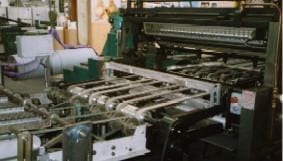
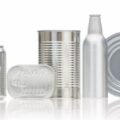

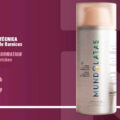
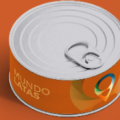
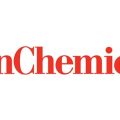
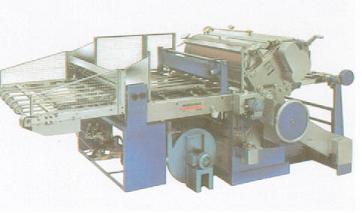
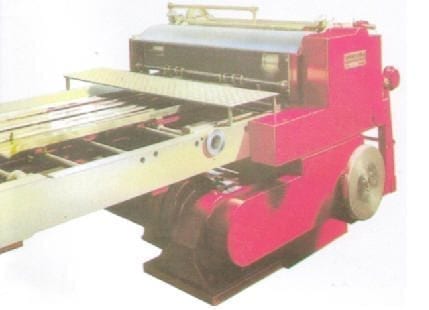
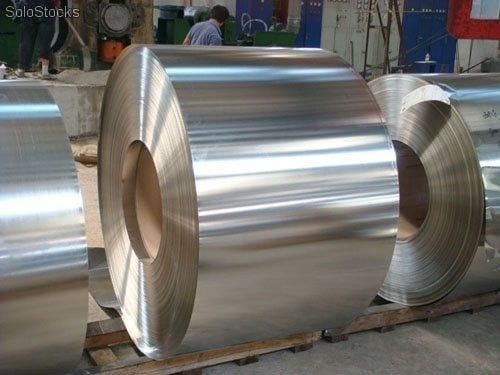
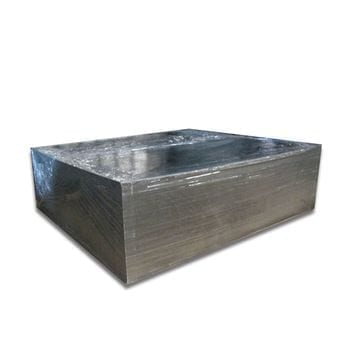
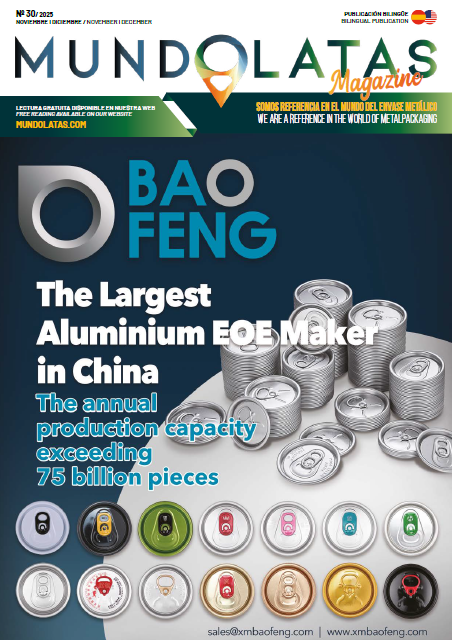

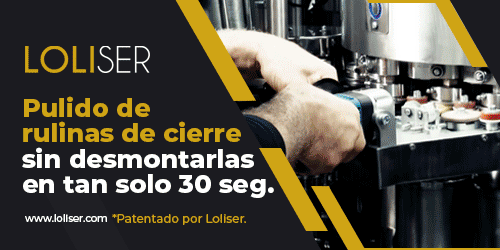
0 Comments